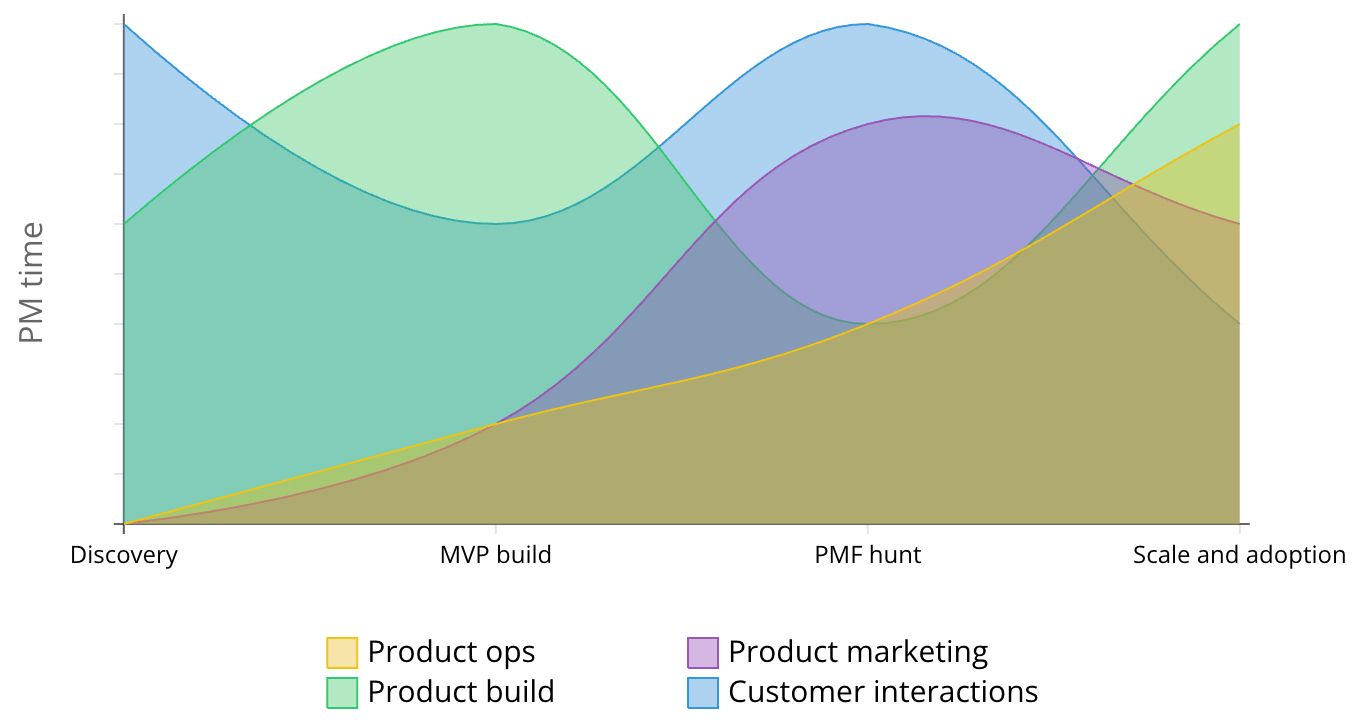Juggling tasks is often seen as a hallmark of product management roles. However, if not managed effectively, constant context switching can hinder your ability to focus, create, and maintain optimal productivity. This juggling act stems from a mental model that suggests product managers must handle all tasks simultaneously. Unfortunately, this mindset can seep into team and stakeholder expectations, exacerbating the situation.
The key to managing this chaos is understanding that product development unfolds in semi-sequential, overlapping waves. Learning to ride each wave and transition smoothly to the next not only enhances your well-being but also accelerates your product's time to market.
In this article, I offer insights on how to allocate your time and energy according to the current product phase and leverage effective strategies to unlock the next level in your product lifecycle.
What causes juggling
Let's explore why PM roles demand so much juggling. Typically, product development follows a sequence: discovery, hypothesis, validation, v1 build, launch, and then repeat and evolve. You would focus on tasks specific to each phase. For example, during discovery, you'd concentrate on customer interviews and market research. As you develop a hypothesis, you'd collaborate with design and engineering teams to build prototypes for validation. Sounds straightforward, right?
In reality, these phases often overlap. There's rarely a clean closure of one phase before moving to the next. For instance, during discovery, even without a clear vision of what to build, you might be assigned an engineering team that needs effective utilization. If not assigned a team, you must consider resourcing while formalizing your vision. Thus, you must think ahead while awaiting closure on previous steps.
Moreover, prior steps leave residues for subsequent ones. After launching a product with clarity on what's next, you'd ideally focus on specs and designs for the next release. However, launched products bring their own baggage—issue triaging, marketing efforts, and adoption continue demanding attention.
This non-sequential lifecycle fills your calendar with diverse activities that trigger context switching and lead to long-term fatigue.
Acknowledge the product phase as a team
Recognizing your position in the product lifecycle is crucial for managing this complexity. During discovery, prioritize customer interactions. As the product scope solidifies, shift focus to execution—unblocking the team, identifying dependencies and risks proactively, and setting clear expectations.
Aligning the team with current goals is vital. For example, if you've launched an MVP seeking product-market fit, customer validation should be the top priority for everyone. While engineers refine the MVP, they should also engage with customers. This alignment relieves pressure from backlogging unnecessary features just to keep teams busy and helps advance to the next phase sooner. But once you strong PMF, then you double down on execution and focus on craft, toning down on other activities.
Identify effective levers
Time to market is critical for product success. Identifying activities that propel your product forward is essential. Ask yourself: "What's one thing that will make everything else easier once completed?"
For instance, nearing a planned release but facing critical dependencies on other teams requires building empathy and alignment with partners. Levers might include securing an executive sponsor or a compelling customer deal to prioritize your requests.
Time-box leveraged activities
Overwhelm arises from treating all activities as ongoing. In reality, most are time-bound and phase-specific. Set short-term primary goals aligned with leverage activities; other tasks can take a backseat. Once you achieve the primary goal, set a new one.
Suppose you've launched v1 of your product to select customers. Gathering quality feedback informs your roadmap and validates future funding—this becomes your leverage and goal.
With this lever identified, dedicate a month to engaging with customers fully. During this period, spec-ing new features or marketing can wait. Once you've gathered sufficient insights, shift focus to incorporating them into the product through actions like UX sprints addressing issues uncovered during customer interactions.
Communicate
As you navigate these phases, keep your team and stakeholders informed about your focus at any given time. This transparency reduces explanations when de-emphasizing certain activities typically expected of you.
Conclusion
In conclusion, product management is inherently messy due to non-sequential phases and overlapping activities from past and future stages. The key is recognizing your current phase, identifying levers that drive progress for that phase, and setting short-term goals focused on specific activities. Finally, communicate clearly so everyone understands your priorities and rationale.
Here’s a mind map summary for the post.





